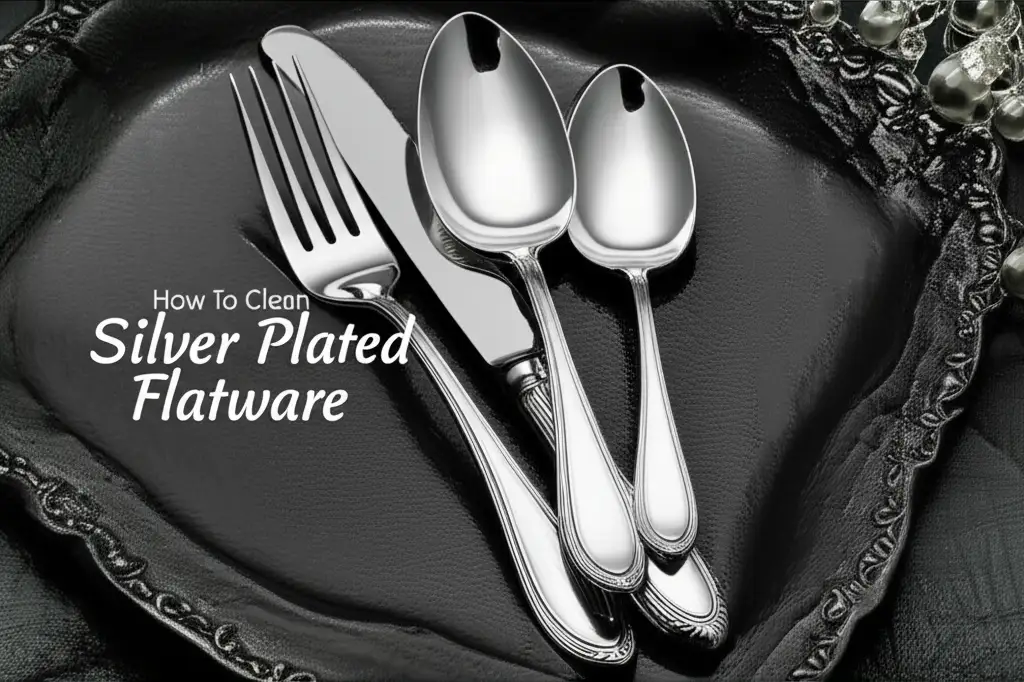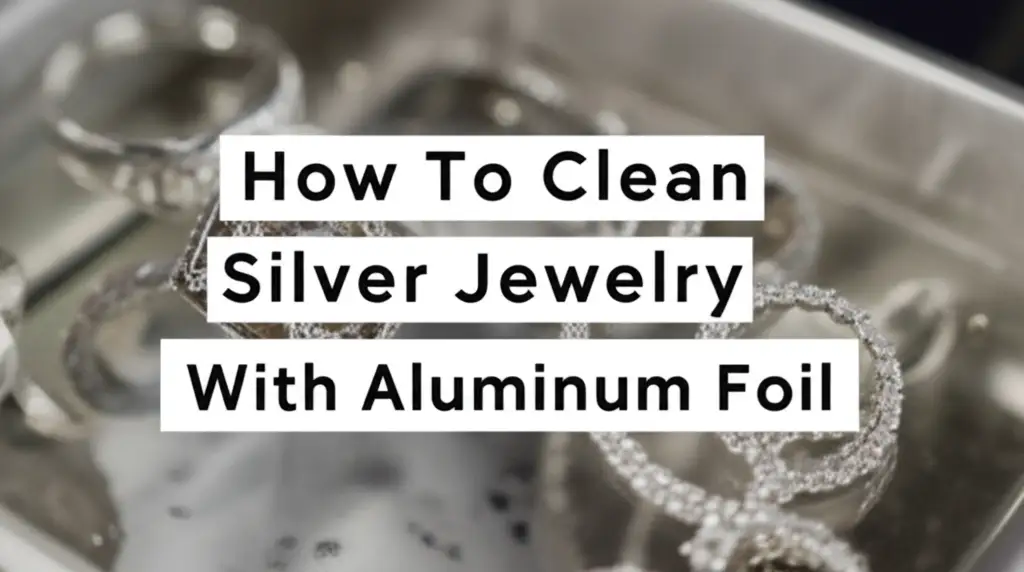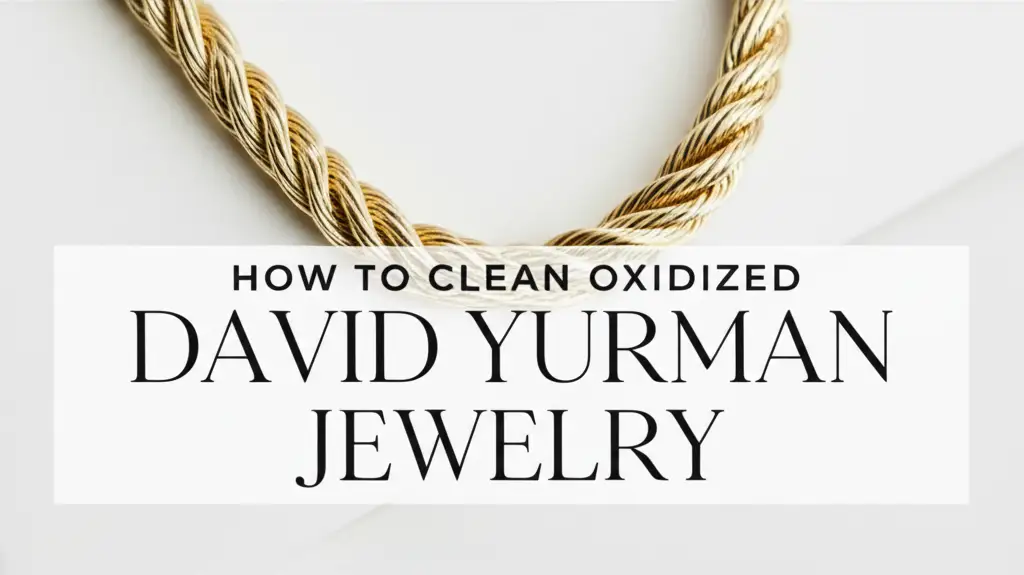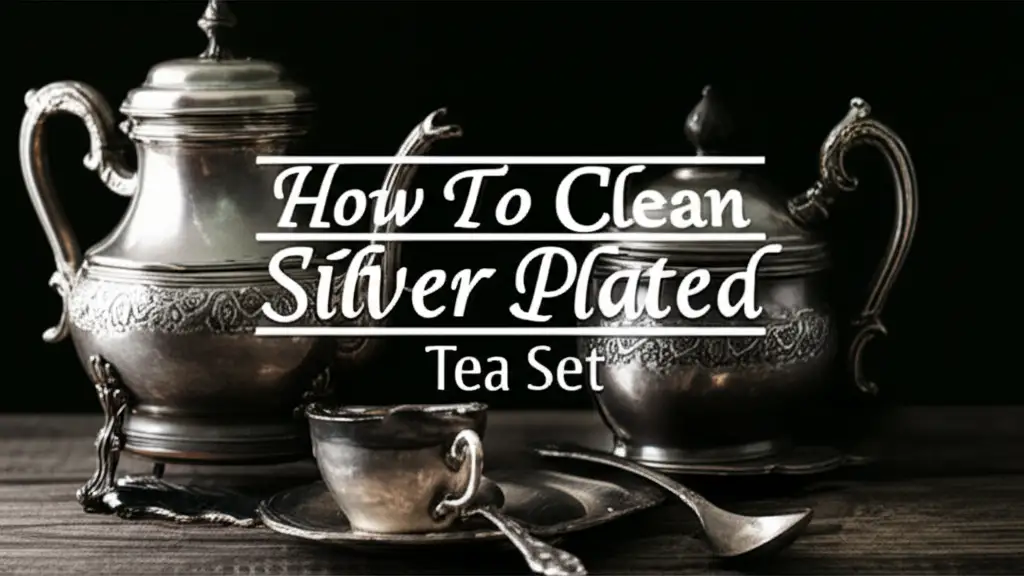· Silver Care · 14 min read
How To Clean Heavily Tarnished Silver
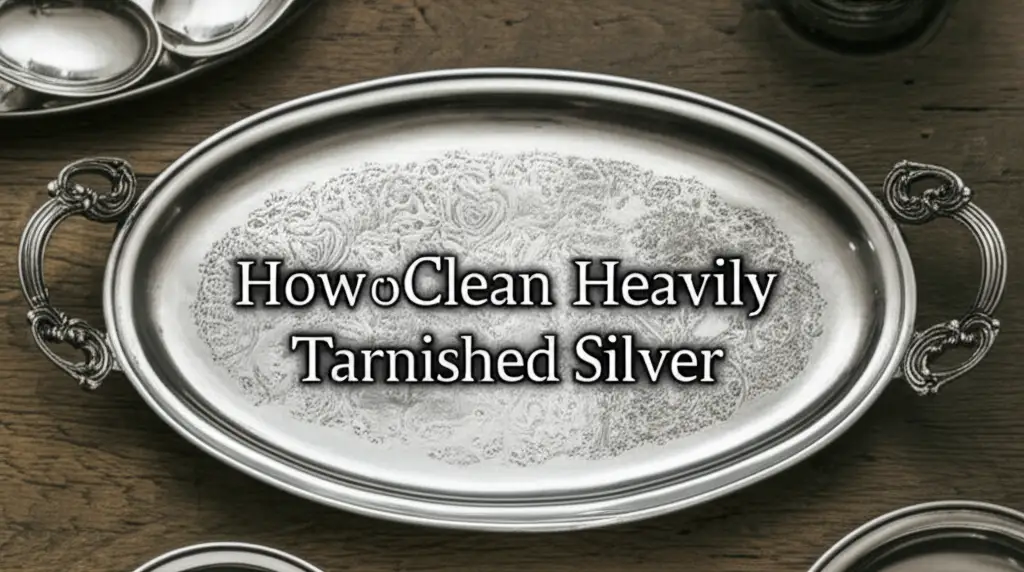
Restore Shine: How To Clean Heavily Tarnished Silver
Has your cherished silver lost its luster? You might see dark, dull patches appearing on your favorite pieces. This common issue is called tarnish, and it happens when silver reacts with sulfur in the air. When the tarnish builds up, it can look very dark and appear almost black. You might think heavily tarnished silver is ruined, but do not worry. This article helps you restore its original beauty. We explore effective and safe methods to clean heavily tarnished silver right at home. We cover everything from simple household items to specialized products, ensuring your silver shines brightly again.
Takeaway
- Assess Tarnish Level: Identify if your silver has light, moderate, or heavy tarnish before choosing a cleaning method.
- Prioritize Safety: Use gloves and ensure good ventilation when cleaning silver, especially with chemical solutions.
- Choose the Right Method: Opt for non-abrasive chemical reactions for heavy tarnish, like the aluminum foil and baking soda bath.
- Protect Delicate Items: Exercise caution with silver items containing gemstones or intricate details.
- Prevent Future Tarnish: Store silver properly in airtight containers or anti-tarnish bags.
Quick Answer
You clean heavily tarnished silver by using a chemical reaction method, such as a baking soda and aluminum foil bath. This process lifts the tarnish without abrasion. For specific items, commercial silver dips or professional cleaning may also be suitable options.
Understanding Heavy Tarnish on Silver Items
Silver’s natural beauty comes from its bright, reflective surface. Over time, many silver pieces develop a dark layer. This layer is called tarnish. Tarnish is a result of a chemical reaction. Silver reacts with sulfur compounds present in the air. This reaction creates silver sulfide. Silver sulfide forms a dull, dark coating on the silver’s surface.
You will see tarnish as yellowing at first. As it gets worse, it turns brown, then purple, and finally black. Heavy tarnish means the silver item is almost completely covered in this dark layer. It looks like the silver is dirty or even rusted. This type of tarnish often makes silver look old and neglected. It can also make engraved details or patterns less visible.
Several factors cause tarnish to build up quickly. High humidity is a major cause. Exposure to certain foods, like eggs or onions, also speeds up tarnishing. Rubber products and some types of paint fumes also contain sulfur. Storing silver near these items can cause rapid tarnishing. Understanding these causes helps you prevent future tarnish once you clean your silver.
Safety First: Preparing to Clean Heavily Tarnished Silver
Before you start cleaning heavily tarnished silver, safety is important. Some cleaning agents, even common household items, can irritate your skin. Always protect your hands. I use rubber gloves or nitrile gloves to prevent direct skin contact. This protects your skin from both the tarnish itself and the cleaning solutions.
You also need good ventilation. When you clean silver, especially with commercial products, fumes can be present. Open a window or clean in a well-aired room. This ensures fresh air circulates. Avoid inhaling any strong odors. Your workspace should be clean and clear. Lay down an old towel or newspaper to protect surfaces from spills. This also catches any residue as you work.
Gather all your tools before you begin. You will need soft cloths, cotton balls, or old toothbrushes. Make sure these are clean. Having everything ready saves time and makes the process smoother. Always read instructions on commercial cleaners carefully. Follow all safety warnings on the product label. Taking these steps makes your silver cleaning experience safe and effective.
The Aluminum Foil and Baking Soda Method: A Powerful Solution
The aluminum foil and baking soda method is effective for heavily tarnished silver. It works through a chemical reaction called ion exchange. This method does not involve harsh scrubbing. It lifts tarnish away without damaging the silver’s surface. This makes it ideal for delicate items or pieces with intricate details.
Here is what you need for this method:
- A glass or plastic bowl (not metal, as it can interfere with the reaction)
- Aluminum foil
- Baking soda
- Boiling water
- Tongs (plastic or wooden)
- Soft cloth for polishing
First, line your bowl with aluminum foil. Make sure the shiny side of the foil faces up. Place your heavily tarnished silver items directly on the foil. You want the silver to touch the foil. Next, sprinkle a generous amount of baking soda over the silver. Use about 1/4 cup for a medium bowl. Pour boiling water over the silver until it is fully submerged. You will see bubbles forming, and you might smell a sulfur-like odor. This means the chemical reaction is taking place.
Let the silver soak for 5-10 minutes. For very heavy tarnish, you might need to let it sit longer, up to 30 minutes. You will see the tarnish moving from the silver onto the foil. The foil will turn black. Use tongs to carefully remove the silver from the hot water. Rinse the silver under cool, running water. Use a soft cloth to gently buff the silver dry. You will notice a remarkable difference. This method is also suitable for cleaning items like a tarnished Pandora bracelet or a sterling silver necklace with baking soda.
Using Commercial Silver Cleaners: When to Choose Them
Sometimes, very heavily tarnished silver needs a specialized approach. Commercial silver cleaners offer a convenient and effective solution. These products typically come in two forms: dips or polishes. Each type has specific uses. Silver dips contain chemicals that quickly dissolve silver sulfide. Polishes work by gently abrading the tarnish away.
Silver Dips: Silver dips are good for items with complex designs or hard-to-reach areas. They work fast. You simply submerge the silver item in the solution for a few seconds. The tarnish disappears almost immediately. However, you must use caution with these products. Some dips can be strong. They can remove the oxidized finish on antique silver. They might also damage certain gemstones. Always check the product label for warnings. Rinse items thoroughly after dipping. This removes all chemical residue.
Silver Polishes: Silver polishes come in creams, liquids, or pastes. You apply them with a soft cloth. You then gently rub the tarnish away. Polishes often contain mild abrasives. They physically remove the tarnish. This method gives you more control. It allows you to focus on specific tarnished areas. Polishes also leave behind a protective layer. This layer slows down future tarnishing. This makes them a good choice for larger items like serving trays or silver-plated flatware.
When choosing a commercial cleaner, consider the type of silver. For sterling silver, most polishes and dips are safe. For silver-plated items, be extra careful. Heavy polishing can wear away the thin silver layer. Always test a small, hidden area first. This ensures the product does not cause damage. My experience tells me commercial cleaners are great for speed and shine. However, they need careful handling and product selection.
Cleaning Silver with Stones or Delicate Details
Cleaning silver items with stones or delicate details requires extra care. Many common silver cleaning methods can harm certain gemstones. Porous stones like pearls, opals, turquoise, and amber are particularly vulnerable. They can absorb chemicals or water. This can cause discoloration or damage. Some stones are soft and can scratch easily. Others are glued in place, and harsh liquids can dissolve the adhesive.
For these items, avoid immersion methods like the aluminum foil bath or strong silver dips. These methods can expose stones to solutions that cause damage. Instead, focus on targeted cleaning. You can use a soft cloth with a small amount of non-abrasive silver polish. Apply the polish carefully only to the silver parts. Avoid touching the stones. Use a cotton swab to reach small areas around the settings.
If the tarnish is heavy and near the stones, try a very mild solution. Make a paste with baking soda and a tiny bit of water. Apply this paste with a soft toothbrush. Gently scrub only the silver. Do not let the paste touch the stones. Rinse the silver quickly under cool water, holding the item so water runs off the silver, not into the stone settings. Dry immediately with a soft cloth. This prevents water from sitting around the stones. For specific advice on cleaning silver rings with stones or sterling silver with gemstones, refer to specialized guides. If you are unsure, professional cleaning is always the safest option for valuable pieces.
Alternative Methods for Heavily Tarnished Silver
While the aluminum foil method is strong, other methods can also tackle heavy tarnish. Each has its strengths and works best for different types of silver items. Always test a small, hidden area first. This confirms the method will not harm your specific silver piece.
Toothpaste Method: You might have heard of using toothpaste to clean silver. This method works due to the mild abrasives in toothpaste. It is good for moderate tarnish, but it can work on heavy tarnish with patience. Use a plain white toothpaste, not gel or whitening varieties. Apply a small amount to a soft cloth or an old toothbrush. Gently rub the tarnished area. You will see the tarnish lift away. Rinse the silver thoroughly under warm water. Dry it immediately with a soft cloth. Be careful not to scrub too hard. This can scratch the silver. This method is detailed in guides like how to clean sterling silver with toothpaste.
Salt and Aluminum Foil Method: This method is similar to the baking soda one. It also uses an electrochemical reaction to remove tarnish. You will need hot water, salt, and aluminum foil. Line a glass bowl with foil, shiny side up. Place your silver items on the foil. Sprinkle a generous amount of salt over the silver (about 1-2 tablespoons for a medium bowl). Pour hot water over the items until they are fully submerged. Let them soak for 5-10 minutes, or longer for very heavy tarnish. You will see the tarnish transfer to the foil. Rinse the silver well and dry it with a soft cloth. This method is often combined with baking soda for extra power, or used independently as described in how to clean silver jewelry with salt.
Vinegar and Baking Soda Paste: This is another home remedy for tarnished silver. Make a thick paste using white vinegar and baking soda. The mixture will fizz. Apply the paste to the tarnished silver. Let it sit for 30 minutes to an hour. Then, gently rub the silver with a soft cloth or a soft-bristled brush. Rinse thoroughly with water. Dry completely. The acidity of the vinegar helps dissolve the tarnish, and the baking soda provides a gentle abrasive action. This method is often chosen when a strong non-abrasive approach like aluminum foil is needed, but you prefer a paste application. Remember, gentle is key to avoid scratching.
Preventing Future Heavy Tarnish: Storage and Routine Care
After putting effort into cleaning heavily tarnished silver, you want to keep it shiny. Proper storage and routine care are essential. Preventing tarnish saves you time and keeps your silver looking good. Tarnish happens when silver is exposed to air and humidity. You can minimize this exposure.
Proper Storage: The way you store your silver makes a big difference. Store individual silver pieces in anti-tarnish bags or cloths. These bags are often treated with chemicals that absorb sulfur gases. This protects the silver from tarnishing agents in the air. If you do not have anti-tarnish bags, wrap each piece in acid-free tissue paper or cotton flannel. Store silver in a cool, dry place. Avoid storing it in areas with high humidity, like basements or bathrooms. Wooden drawers made from certain woods, like oak, can also emit gases that cause tarnish. Line these drawers with felt or anti-tarnish fabric before storing silver inside. Airtight containers or zip-lock bags are also excellent for smaller items like jewelry. This reduces air exposure.
Routine Care: Regular, gentle cleaning helps prevent heavy tarnish buildup. You do not need strong chemicals for light tarnish. A soft polishing cloth made for silver can remove light tarnish easily. These cloths are often impregnated with a mild cleaning agent. Simply wipe down your silver items regularly, especially after use. This removes oils from your skin and any environmental residue.
Consider wearing your silver jewelry often. The natural oils from your skin can actually help protect silver from tarnishing. However, avoid wearing silver when doing chores, exercising, or swimming. Chemicals like chlorine can damage silver. Remove silver jewelry before applying lotions, perfumes, or hairsprays. These products contain ingredients that can speed up tarnishing. A simple wipe down after each wear can go a long way in maintaining the shine of your 925 Italy silver chain or other silver pieces.
When to Seek Professional Help for Heavily Tarnished Silver
Sometimes, even with the best home methods, heavily tarnished silver might need professional attention. Certain situations call for the expertise of a professional silversmith or jeweler. Knowing when to get help saves you from potentially damaging valuable items.
Consider professional cleaning for antique silver. Old silver items often have a delicate patina. This is a subtle oxidized layer that forms over many years. It adds character and value to antiques. Aggressive cleaning can remove this patina. A professional knows how to clean antique silver without harming its historical value. They can use specialized techniques to clean the tarnish while preserving the patina.
Items with complex designs or multiple materials also benefit from professional care. Silver pieces with intricate filigree, engravings, or embedded stones (especially delicate ones like pearls or opals) are challenging to clean at home. A professional has tools and knowledge to clean these areas safely. They can also re-secure loose stones or repair minor damage during the cleaning process.
If your silver is extremely tarnished, almost black, and home methods have not worked, a professional has stronger, safer solutions. They can use ultrasonic cleaners or industrial-grade chemicals that are not available to the public. They also know how to polish silver without removing too much of the metal. Repeated harsh polishing at home can thin out your silver over time. For very valuable family heirlooms or museum-quality pieces, professional cleaning is the safest choice. It protects your investment and ensures the item’s longevity.
FAQ Section
Can heavily tarnished silver be restored completely?
Yes, you can often restore heavily tarnished silver. Methods like the aluminum foil and baking soda bath are very effective. They remove the dark silver sulfide layer. This brings back the silver’s original shine. Some deep scratches or pitting will remain. Professional cleaning can address these further.
Is it safe to use abrasive cleaners on silver?
No, it is not safe to use strong abrasive cleaners on silver. Abrasives can scratch the soft metal surface. They can also remove silver plating from plated items. Always use mild polishes or non-abrasive methods for cleaning. This preserves the silver’s finish and longevity.
How often should I clean heavily tarnished silver?
The frequency depends on usage and storage. If silver tarnishes heavily, it means it needs more frequent cleaning or better storage. For occasional use, clean it after each use. For display items, check every few months. Clean it as soon as you see signs of tarnish, before it becomes heavy.
What’s the best way to store silver to prevent tarnish?
Store silver in a cool, dry place. Use anti-tarnish bags, cloths, or airtight containers. Wrap individual pieces in acid-free tissue paper or flannel. This protects silver from air, humidity, and sulfur compounds. Good storage is key to preventing heavy tarnish.
Does white vinegar clean heavily tarnished silver?
White vinegar can help clean heavily tarnished silver, especially when mixed with baking soda. The acidity helps dissolve tarnish. However, it is generally less effective on very heavy tarnish than the aluminum foil and baking soda method. Always rinse thoroughly after using vinegar.
Can toothpaste clean heavy tarnish?
Toothpaste can clean some heavy tarnish. It contains mild abrasives. Apply a small amount of plain white toothpaste with a soft cloth. Rub gently. Rinse well. Be careful not to use too much force. Excessive rubbing can scratch the silver’s surface.
Conclusion
Seeing your silver tarnished can be disheartening. However, cleaning heavily tarnished silver is a task you can master. You have learned that understanding tarnish is the first step. Safety precautions ensure a smooth cleaning process. The aluminum foil and baking soda method stands out. It is a powerful, non-abrasive solution for severe tarnish. Commercial cleaners offer another strong option. They come in specific formulas for different needs.
Remember to treat items with stones or delicate details with care. Avoid harsh chemicals for these pieces. Gentle, targeted cleaning preserves their beauty. Preventing future tarnish is as important as cleaning it. Proper storage and routine gentle care keep your silver bright. Knowing when to seek professional help ensures valuable or very delicate items get the best treatment. I encourage you to try these methods. Restore the sparkle to your silver. You will feel proud of your shining possessions once again. Take action today and bring back the brilliance to your tarnished silver!
- silver cleaning
- tarnish removal
- sterling silver
- home remedies
- silver restoration
- jewelry care
- polishing silver

